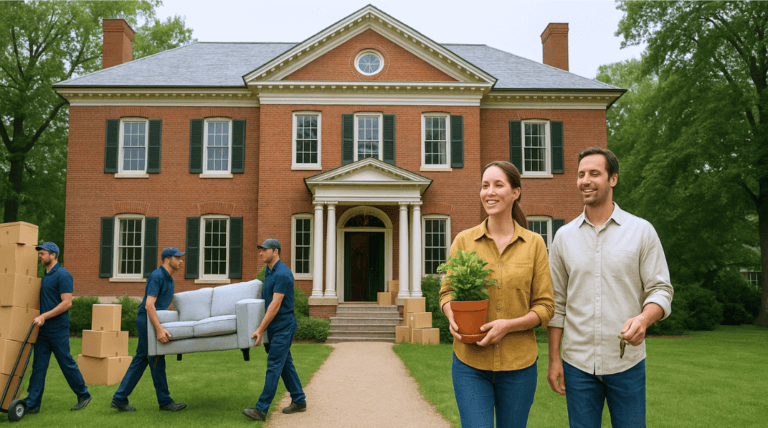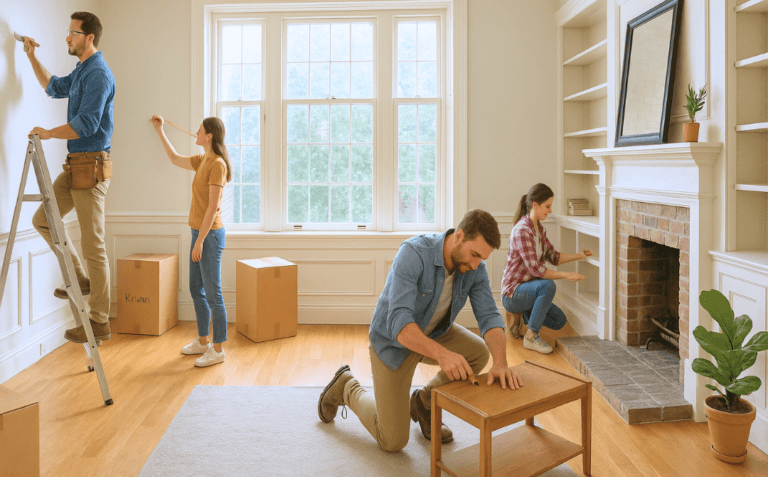Moving into a historic home can be an exciting adventure filled with unique possibilities and charming features. These homes often come with their own set of quirks and require a bit of extra care, making the transition both rewarding and a little challenging. Whether you’re a history buff captivated by the past or a real estate enthusiast looking for something special, understanding the ins and outs of historic home buying is crucial. In this post, we’ll share tips for moving into these timeless residences, offer home renovation advice to help you preserve historic homes, and provide a moving checklist tailored for historic homes. Let’s make your move as smooth as possible, and if you need extra help along the way, don’t hesitate to reach out for personalized advice or a moving quote!

1. Preparing for the Move
Moving into a historic home requires careful planning and preparation. This section covers essential steps to ensure a smooth transition, from creating a tailored moving checklist to navigating the unique aspects of historic real estate.
2. Moving Checklist for Historic Homes
• Creating a moving checklist tailored for historic homes is crucial for a smooth transition. Start by researching the property’s history and any preservation requirements.
• Next, make a list of specialized movers experienced in handling antique furniture and delicate architectural elements. It’s important to protect these features during the move.
• Don’t forget to arrange for utility transfers, keeping in mind that older homes may have unique systems. Lastly, plan for any immediate repairs or upgrades needed to make the space livable while preserving its mhistoric charm.
3. Tips for Moving Day
• On moving day, prioritize protecting the home’s original features. Use padding and covers for doorways, stairs, and floors to prevent damage from heavy furniture and foot traffic.
• Assign a team member to oversee the careful handling of antique items and architectural elements. It’s better to take extra time than risk damaging irreplaceable features.
• Keep important documents, like the home’s history and maintenance records, easily accessible. This information can be valuable for movers and any specialists you may need to consult during the process.
4. Real Estate Tips for Buyers
• When buying a historic home, work with a real estate agent who specializes in these properties. They can guide you through the unique challenges and opportunities of historic home ownership.
• Get a thorough inspection from someone experienced with older buildings. They can identify potential issues with outdated systems or structural concerns that may not be apparent to the untrained eye.
• Research local historic preservation laws and potential tax incentives for owning a historic property. These factors can significantly impact your long-term costs and responsibilities as a homeowner.
5. Navigating Home Renovations
Renovating a historic home requires a delicate balance between preserving its character and updating it for modern living. This section provides guidance on tackling renovations while respecting the home’s heritage.
6. Home Renovation Advice
• When renovating a historic home, start by consulting with preservation experts or local historical societies. They can provide valuable insights into appropriate renovation techniques and materials.
• Create a detailed plan that outlines which features you want to preserve and which areas need updating. This helps strike a balance between maintaining the home’s character and improving its functionality.
• Consider working with contractors who have experience with historic properties. They’ll be familiar with the challenges of older homes and can help navigate potential issues like lead paint or asbestos.

7. Preserving Historic Homes
• Preserving a historic home goes beyond maintaining its appearance. It’s about safeguarding its cultural and architectural significance for future generations.
• Start by documenting the home’s current condition, including photographs and detailed descriptions of unique features. This record can guide future restoration efforts and serve as a valuable historical resources.
• Research the appropriate preservation techniques for your home’s specific era and style. Using period-appropriate materials and methods helps maintain the home’s authenticity and structural integrity.
8. Dealing with Historic Home Features
• Historic homes often come with unique features that require special care. Identify these elements early on, such as original woodwork, vintage fixtures, or period-specific architectural details.
• Learn proper maintenance techniques for these features. For example, original wood windows may need regular re-glazing and weatherstripping rather than replacement.
• If certain elements are beyond repair, look for salvage yards or specialty manufacturers who can provide period-appropriate replacements. This helps maintain the home’s historic character even when updates are necessary.
9. Maintaining Original Elements
• Proper maintenance is key to preserving your historic home’s original elements. Create a schedule for regular upkeep of features like wood floors, plaster walls, and vintage fixtures.
• Learn to spot early signs of wear or damage. Addressing issues promptly can prevent more extensive and costly repairs down the line.
• Build relationships with local craftspeople who specialize in historic restoration. Their expertise can be invaluable when you need to repair or replicate original elements.
10. Creating a Modern Comfort Zone
• While preserving historic features is important, it’s equally crucial to create a comfortable living space that meets your needs. Look for creative ways to incorporate modern amenities without compromising the home’s character.
• Consider hidden updates, such as improving insulation or updating electrical systems, which can significantly enhance comfort without altering the home’s appearance.
• Create designated areas for modern necessities like home offices or entertainment centers. With thoughtful design, these spaces can blend seamlessly with the home’s historic aesthetic.
Moving into a historic home is more than just a change of address—it’s a chance to become part of something bigger than yourself. With the right preparation, thoughtful renovations, and a deep respect for the craftsmanship of the past, you can create a living space that honors tradition while embracing the comforts of modern life. Whether you’re preserving intricate woodwork, navigating local preservation laws, or simply learning your home’s unique story, the journey is as meaningful as the destination. And if you ever need support along the way, Condor Moving Systems is here to help make your move into history as smooth and stress-free as possible.
Call us at (877) 460-6683 or
Request your free moving quote at www.condormovingsystems.com



